I am trying to perform time series data analysis on financial data and I want to perform seasonal decomposition
from statsmodels.tsa.seasonal import seasonal_decompose
import pandas as pd
import datetime
import pandas_datareader as data
df = data.get_data_yahoo('UGA', start=everSince, end=today)
df_close = df[['Close']]
result = seasonal_decompose(df_close, model='multiplicative')
The error I get in this way
You must specify a period or x must be a pandas object with a PeriodIndex or a DatetimeIndex with a freq not set to None
I know I can specify the frequency as df.asfreq() but financial data do not have a daily frequency (i.e., I do not have an entry for every single day) since they are from Monday to Friday and sometimes there are holidays.
How can I apply seasonal_decompose to this kind of data? I have also tried df_close.index = df_close.index.to_period('B') but did not work.
An example of the df is:
Close
Date
2008-02-28 49.790001
2008-02-29 49.610001
2008-03-03 49.810001
2008-03-04 47.450001
2008-03-05 49.049999
2008-03-06 49.369999
2008-03-07 50.230000
2008-03-10 50.610001
2008-03-11 50.700001
2008-03-12 50.919998
2008-03-13 49.939999
2008-03-14 50.049999
2008-03-17 46.869999
2008-03-18 48.980000
2008-03-19 47.540001
2008-03-20 48.070000
2008-03-24 48.459999
2008-03-25 49.490002
2008-03-26 50.320000
2008-03-27 50.110001
2008-03-28 50.009998
2008-03-31 48.509998
2008-04-01 48.840000
2008-04-02 51.130001
2008-04-03 50.419998
2008-04-04 50.900002
2008-04-07 51.430000
2008-04-08 50.959999
2008-04-09 51.290001
2008-04-10 51.540001
where indices are of type pandas.core.indexes.datetimes.DatetimeIndex.

